क्रिस्पी दक्षिण भारतीय डोसे पाने के राज
41 मिनट पढ़ें काग़ज़-सी पतली, टूट-फूट से मुक्त डोसे के लिए अचूक तकनीकें सीखिए—भिगोने की दर से किण्वन के संकेतों, बैटर फैलाने, तवे की गर्मी, तेल लगाने, आर्द्रता और ऊँचाई के अनुसार समस्याओं के निवारण तक। अक्टूबर 09, 2025 18:07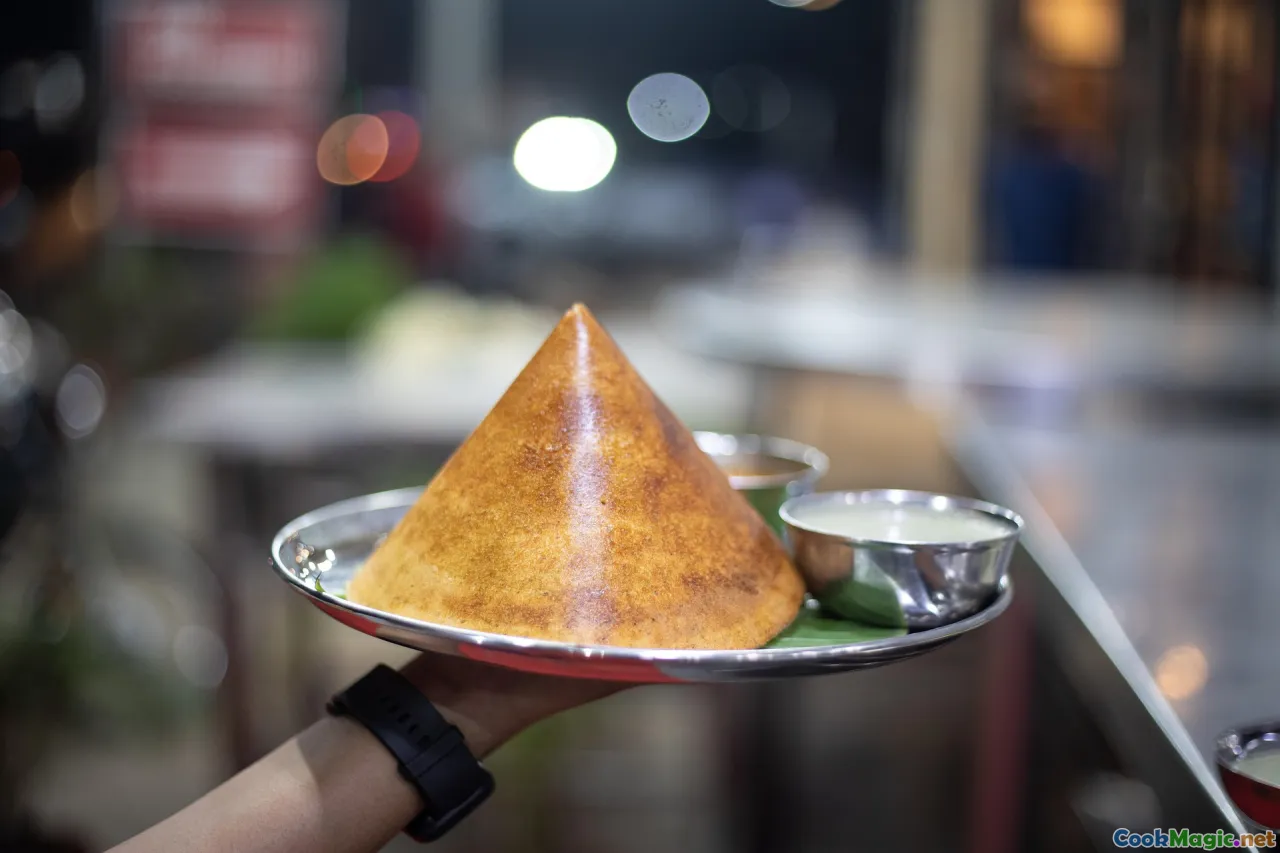
The morning I learned to listen to a dosa, the kitchen sounded like rain on a tin roof. A whispering hiss when the ladle met hot iron. A crackle when oil kissed batter. The edges lifted, tissue-thin and amber, like the turned pages of a well-loved book. I’d eaten dosas my whole life, but that day—standing in a small Chennai kitchen, the air fragrant with gingelly oil and curry leaves—I realized crispness isn’t an accident. It’s a practiced art, honed over generations, carried in muscle memory and the patient attention of cooks who know how the batter breathes, when the tawa sighs, and exactly how much pressure will coax lace from grain.
The Crackle That Hooks You
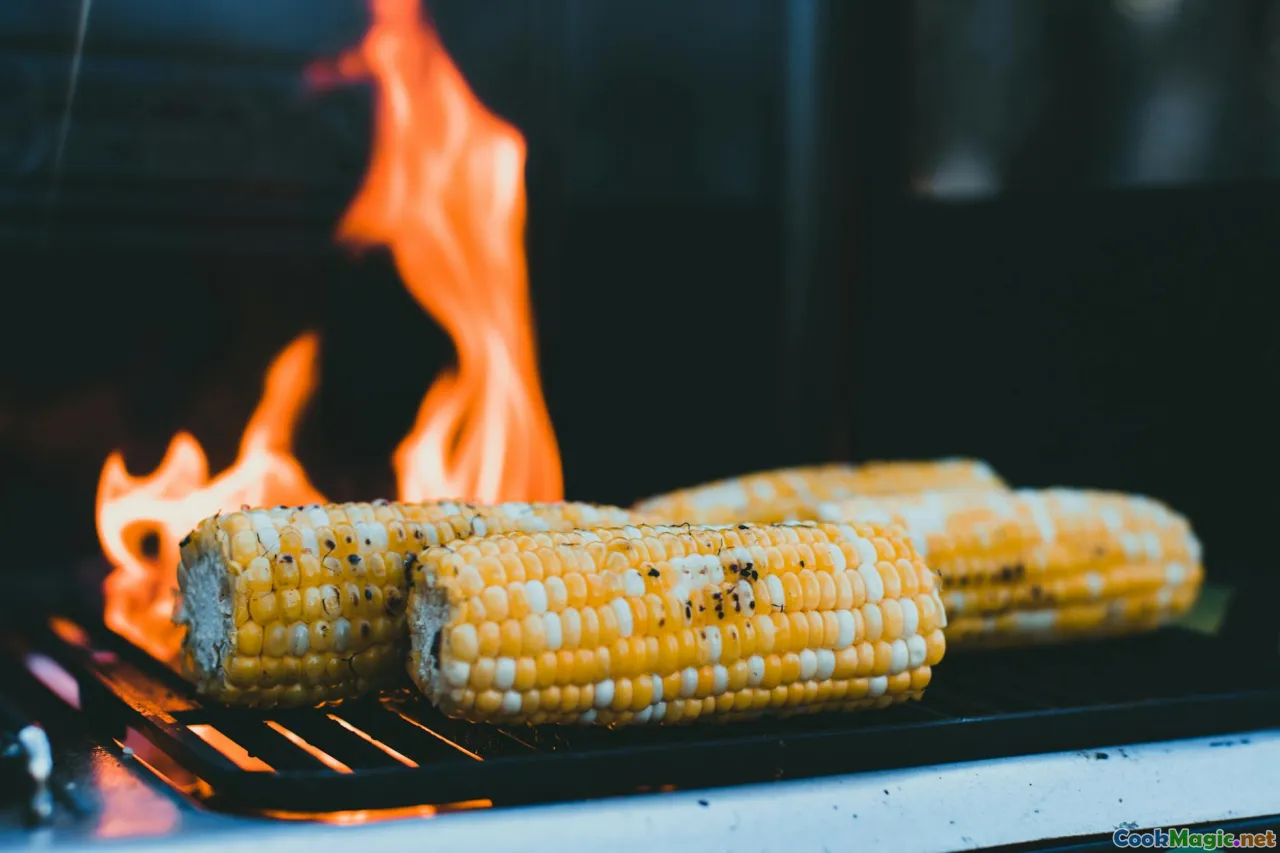
Hold a fresh dosa near your ear. Before you tear a corner, before the coconut chutney softens a patch into a sweet, creamy pillow, listen. The crackle is a promise: that this is not just a pancake but a wafer-slim sculpture, architecture in starch, designed to shatter and dissolve with a warm, toasted sweetness that only fermented rice and urad can conjure. The aroma is nutty and lightly tangy—like toasted rice mingling with the buttery perfume of ghee. The first bite is all edges, a fragile crescendo, and then you reach the tender center, which has a slight chew and a mellow lactic glow.
Crispy dosas can be austere, almost monastic—minimal fat, deliberate heat, unembellished excellence. Or they can be decadent: a butter-lacquered benne dose in Davanagere that shatters while leaving your fingers glistening, the aroma of browned milk solids trailing you for hours. What ties every style together is intention. The crackle doesn’t happen by chance; it is coaxed out by choices—of grain, grind, fermentation, and fire.
A Short History of Crispness: From Udupi Kitchens to Darshini Counters

The dosa’s ancestral home stretches along the western coast and across the southern peninsulas—Udupi and Mangaluru kitchens, temple canteens, Brahmin mathas with their rules about purity and technique. Udupi restaurants popularized idli and dosa across India, turning once-local rituals into national cravings. In Bengaluru, the darshini revolution—fast, affordable counters—taught city dwellers to expect a dosa so crisp it could stand up on a plate like a gold-edged sail.
At Vidyarthi Bhavan in Basavanagudi, plates of ghee-bronzed dosas arrive stacked, like a ceremonial offering. In Davanagere, the benne dose makers roll butter like a talisman; their griddles smell sweet, nutty, and faintly caramelized. In Chennai’s Mylapore, Rayar’s Mess griddles whisper early in the morning, batter ladled with the grace of habit. Each place, each tradition, lands on a slightly different expression of crispness. But from temple kitchens to traffic-thick breakfast stands, the grammar is the same: balance the rice, respect the urad, ferment with patience, and be ruthless with your heat.
The Grain of the Matter: Choosing Your Rice and Dal

The palette for crispy dosa is humble: rice, urad dal (black gram), water, salt, and a small fistful of supporting players like fenugreek seeds and poha. Yet the choices within these staples determine your outcome.
- Rice: For crisp dosas, a blend of parboiled rice (idli rice) and raw rice works beautifully. Parboiled rice gelatinizes readily and offers structure; raw rice lends snap and thinness. In Tamil kitchens, you’ll often find ratios like 3 parts rice to 1 part urad, with the rice itself split in half: 50% parboiled idli rice and 50% medium-grain raw rice (Sona Masoori or Ponni). If you can’t find idli rice, use a good-quality medium-grain rice rather than long-grain basmati; basmati’s length and aroma don’t translate into the right kind of crispness.
- Urad dal: Use whole, skinned urad dal (gota). The dal’s mucilage is the batter’s engine for aeration and elasticity. Split urad will work, but whole urad often ferments more robustly and whips up with better volume when ground.
- Fenugreek seeds (methi): A teaspoon or two per cup of urad transforms fermentation. Methi provides natural emulsifiers and a whisper of bitterness that disappears in the cook but deepens the dosa’s color and fragrance.
- Poha (flattened rice): A handful added to the rice soak or grind lends ethereal lightness. Poha’s starchy softness helps create that lacy pattern—you’ll see it as elegant portholes scattered across the dosa’s surface.
- Chana dal: A tablespoon or two in the rice soak is an old trick for color and nutty crispness. It browns beautifully, dotting the dosa with tiny golden freckles.
A reliable ratio for a crisp, classic dosa: 3 cups rice (1.5 idli rice + 1.5 raw rice) to 1 cup urad dal. Add 1–2 teaspoons fenugreek seeds and a generous handful of thin poha. If you favor ultra-thin paper dosas, push the rice a smidge higher—3.5:1. If you love a Bengaluru-style benne dose with a tender core and crisp rim, keep it at 3:1 but finish on the tawa with butter.
Soaking with Intention
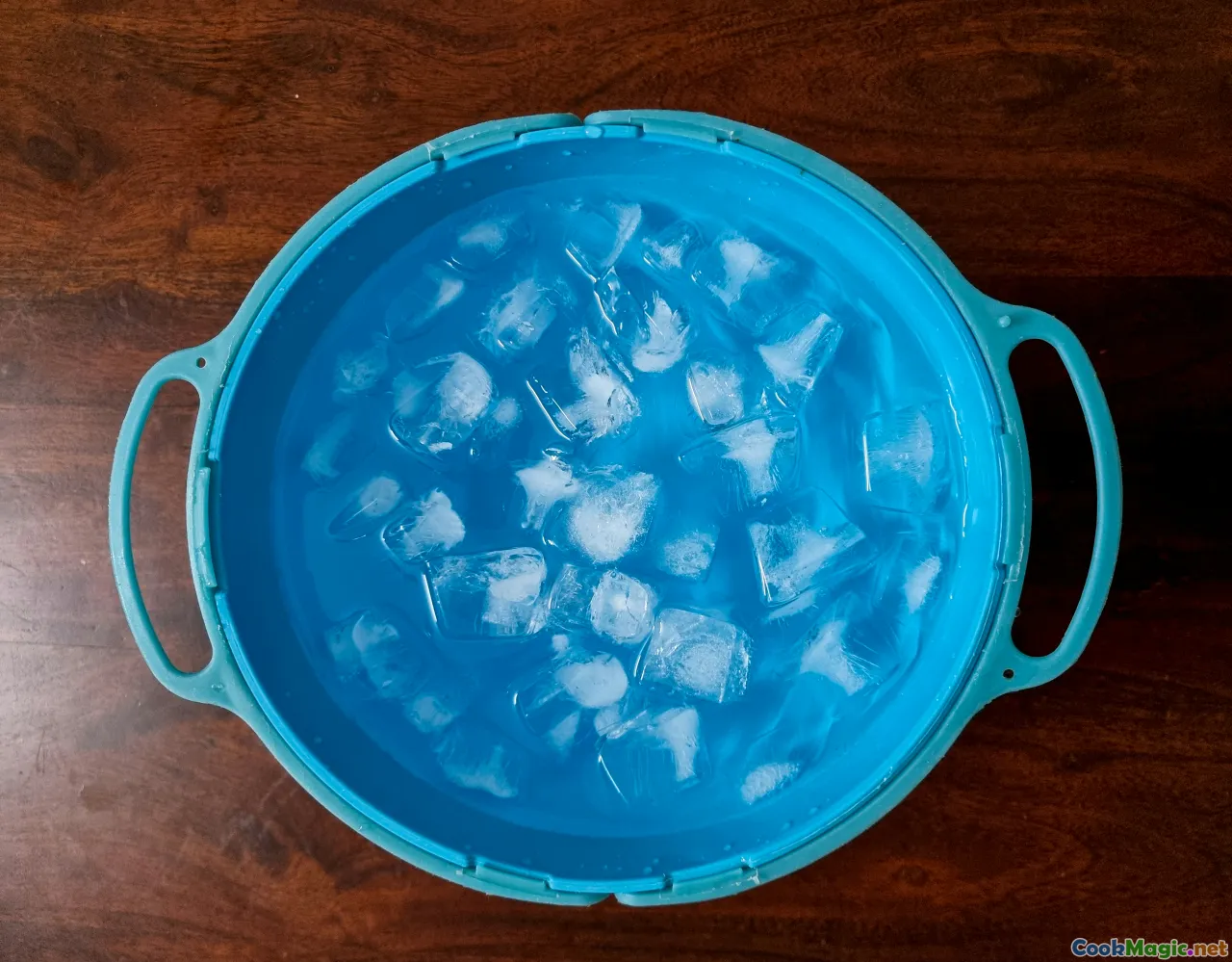
Soaking isn’t a formality; it’s the beginning of transformation. Rinse rice and dal separately until the water runs almost clear; you’re washing away surface starches and dust that can muddle flavor and make batter gluey. Then soak them in plenty of room-temperature water.
- Rice: 4–6 hours is typical. If your home is chilly, go up to 8 hours.
- Urad dal: 3–4 hours is enough. Over-soaking can lead to mushy dal that doesn’t whip well.
- Fenugreek: Soak with the urad or with the rice. The goal is softness; methi lends aroma and an invisible scaffolding to the final batter.
- Poha: If using, soak for 20–30 minutes just before grinding, or fold in after grinding rice. It breaks down easily.
Use clean, filtered water if your tap water is heavily chlorinated; chlorine can be unkind to fermentation. There’s no need to fuss too much—South Indian homes have pulled off fermentation for centuries without pH meters—but start with water that tastes good to drink. A pinch of cooked rice added to the rice soak is a grandmother’s insurance policy; it carries friendly microbes that wake up batter faster.
Grind Like a South Indian
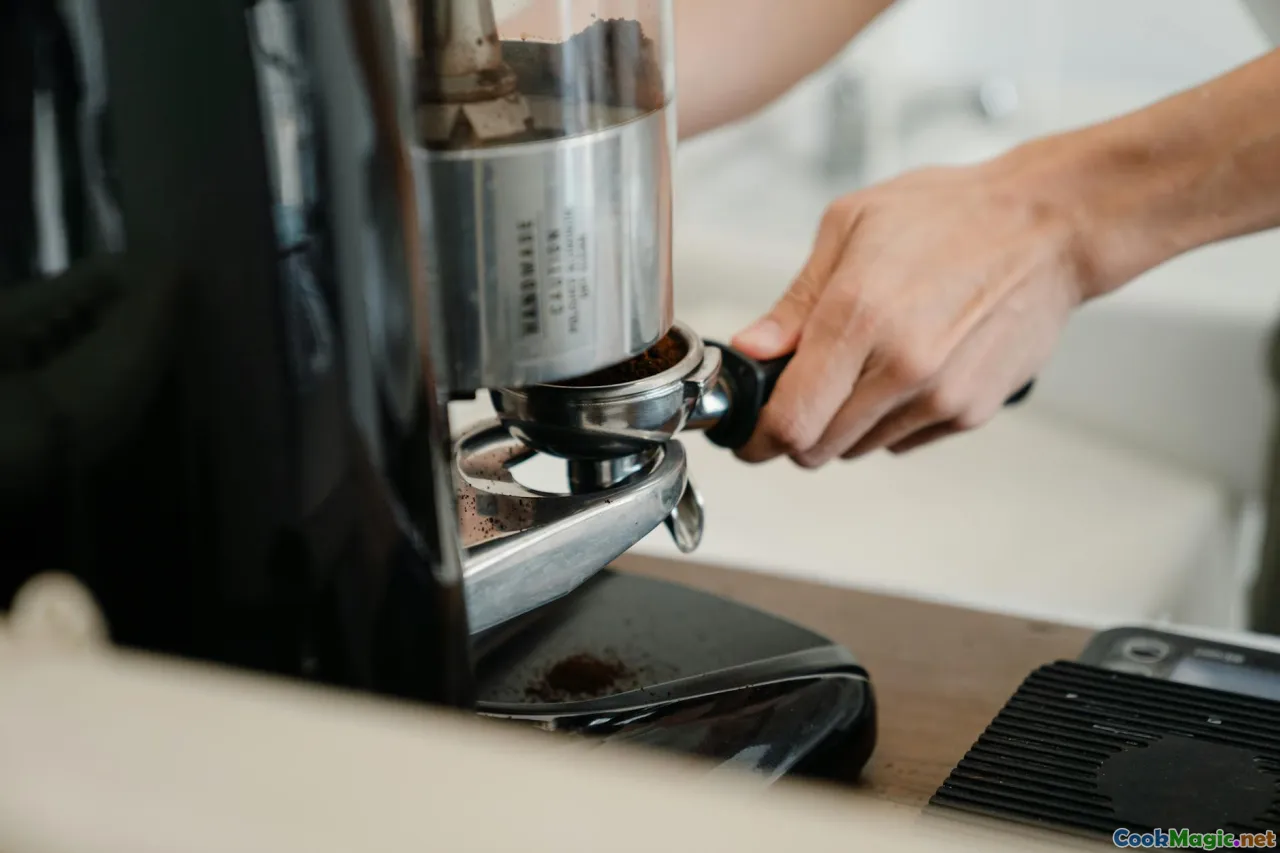
The grind defines the batter. A proper wet stone grinder—those tabletop workhorses that hum contentedly on counters across Tamil Nadu—will always give you the fluffiest urad and the smoothest rice, because slow stone action keeps the batter cool while releasing starch and mucilage evenly. But a high-speed blender can yield excellent dosas with care.
General approach:
- Grind urad separately: Drain and grind with just enough cold water to keep the stones or blades moving. In a wet grinder, this can take 15–20 minutes to become billowy and light, almost like softly whipped cream. In a blender, pulse in short bursts, resting in between to keep heat low. You want a volume increase and a satin finish.
- Grind rice coarser: Drain rice (and chana dal, if using). Add a little water and grind to a slightly gritty paste—the texture of fine semolina, not completely smooth. This micro-grit yields the coveted lacy pattern and contributes to crispness. Add soaked poha towards the end; it disappears into the paste.
- Combine gently: Fold rice into urad with your clean hand, not a spoon. The warmth of your hand and the motion introduce air; you should feel the batter lighten. Aim for a pourable batter—a ribbon that falls off your fingers, not a runny stream. Add non-iodized or lightly iodized salt after fermentation begins if your kitchen is very cold; otherwise, adding salt before fermenting is fine and can help control overly vigorous activity. Either way, don’t over-salt; it tightens the batter.
Keep the batter cool while grinding. Heat is the enemy of structure; it can damage starches and proteins and lead to a flat ferment. If your blender runs hot, use ice-cold water or chill your urad in the fridge before grinding.
Good Fermentation Is a Living Story

Fermentation is where dosa batter becomes alive: a slow fizz that lifts and loosens, creating flavors that read as nutty, mellow, slightly tangy. Too sour and you risk a brittle dosa that tastes harsh; too young and it won’t brown or crisp properly.
What to look for:
- Increase in volume by 50–100% is ideal. The batter should feel airy, with tiny bubbles along the sides.
- Aroma: a clean, lightly sweet-sour fragrance. If it smells sharply vinegary, you’ve gone too far.
- Texture: prick the surface with a spoon. Does it spring back slowly? That resilience means a good network.
Conditions:
- Temperature: 24–30°C (75–86°F) is the sweet zone. In winter, tuck the bowl in an oven with the light on, or use the yogurt setting of an Instant Pot without sealing the lid (avoid overheating). In summer, keep it away from direct sun; you want warmth, not a sauna.
- Vessel: A deep, non-reactive bowl with headspace. Steel or glass is fine. Cover loosely to keep dust out but let gases escape.
- Time: 8–12 hours is common in warm places; in cooler climates, 12–18 hours. Don’t watch the clock—watch the batter.
If your batter is struggling, stir in a teaspoon of sugar to feed the microbes and wait another hour. If it’s racing, punch it down gently to deflate and park it in the fridge. You can ferment without fenugreek or poha, but they are powerful allies; methi in particular speeds up fermentation and helps stabilize the foam.
The Secret Helpers: Fenugreek, Poha, and Chana Dal
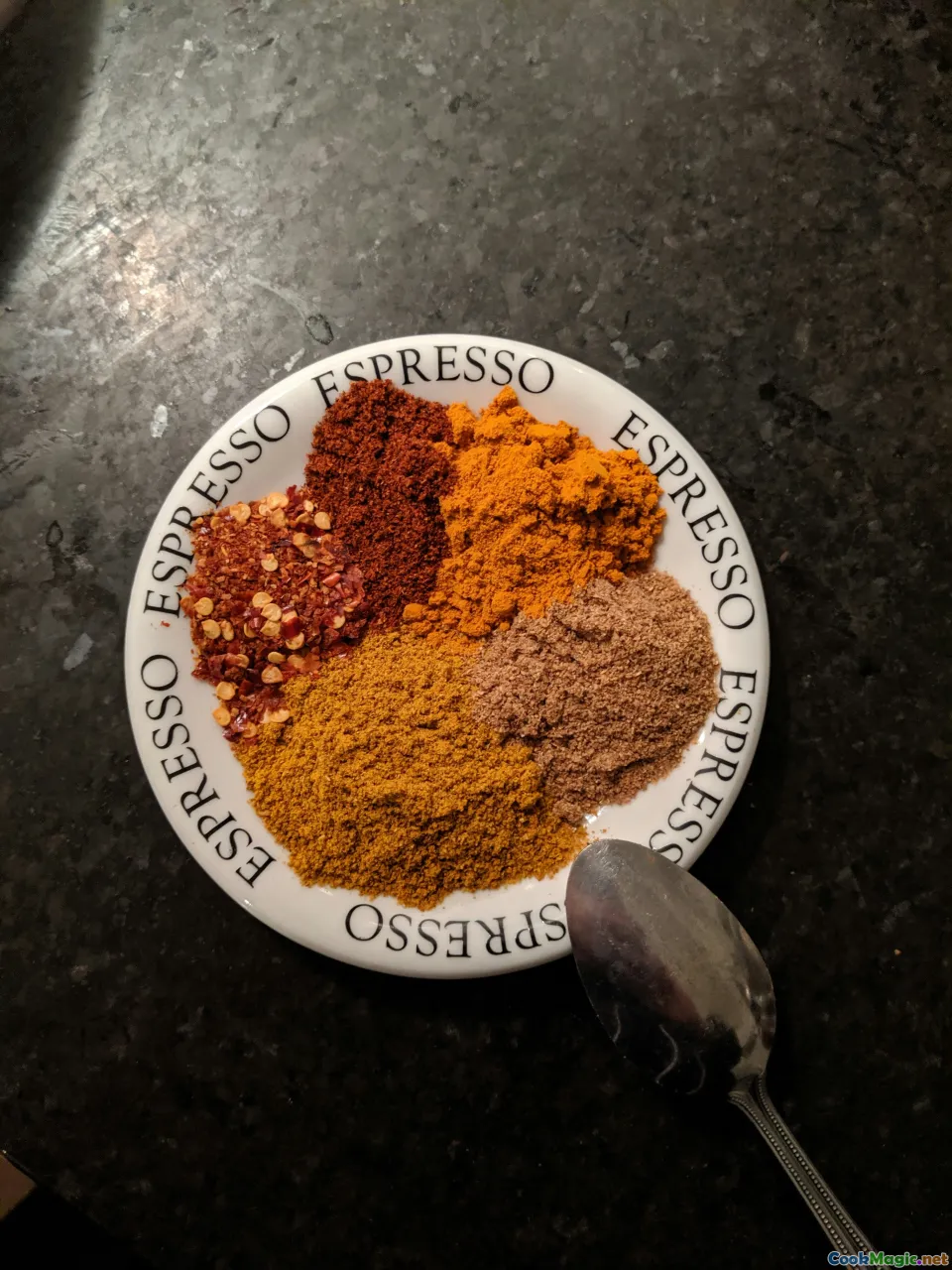
- Fenugreek seeds add more than aroma. They’re rich in soluble fiber and natural emulsifiers that trap gas, keeping the batter lofty. They help browning without tipping into bitterness.
- Poha gives lacing and a delicate shatter by increasing the batter’s spreadability while maintaining crisp edges. It’s like wind in a paper kite—lightness without fragility.
- Chana dal blushes the dosa with a gentle tan and tiny crunchy specks. Too much and the batter can feel grainy; 1–2 tablespoons per 3 cups rice is the sweet spot.
These are optional, but if you’ve ever wondered why a restaurant dosa has that indefinable crisp-grace you can’t replicate at home, these little helpers are often the difference.
Tawa Talk: Iron, Heat, and the Onion Test
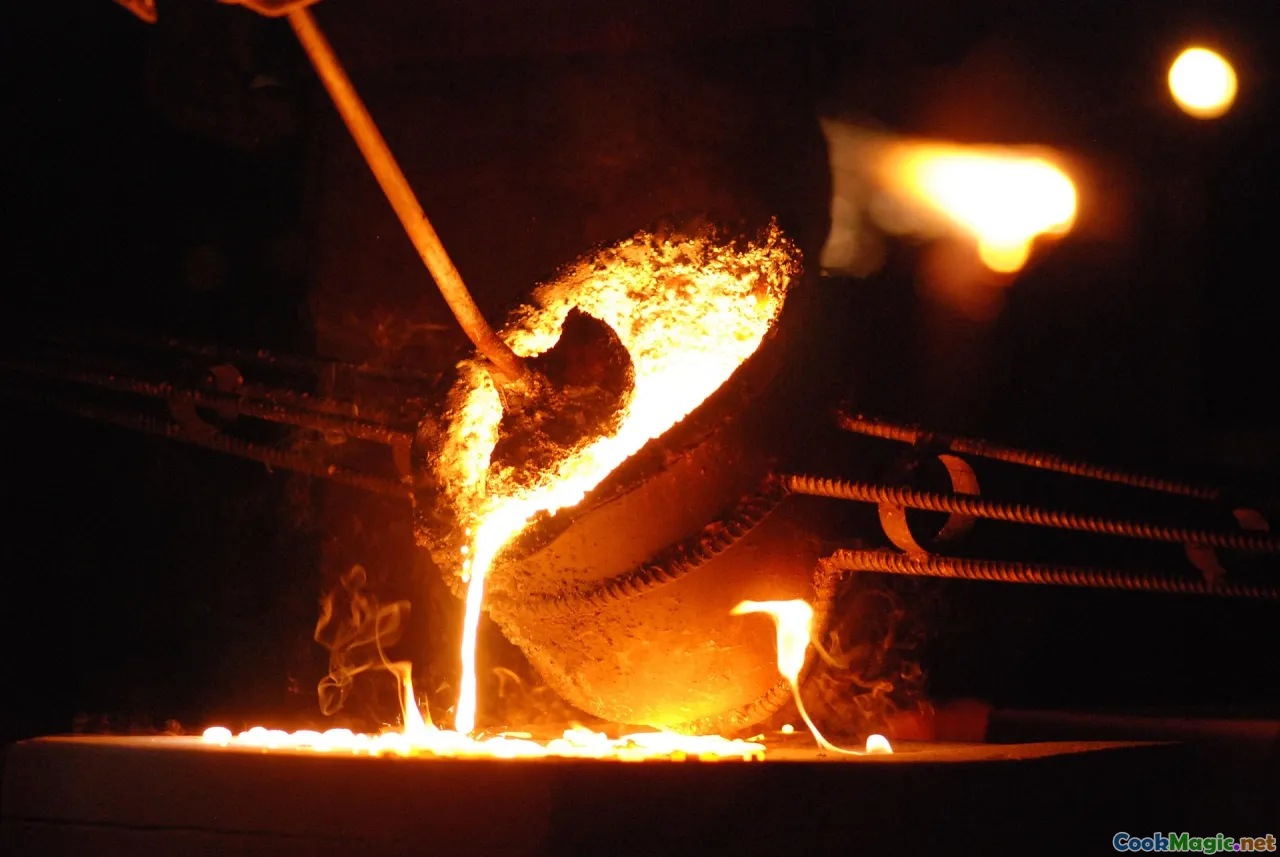
A dosa’s fate is sealed on the tawa. The griddle must be seasoned, evenly heated, and obedient to your signals.
- Material: Cast iron reigns. It stores heat like a memory, releasing it steadily so batter sets before it has a chance to puddle. Carbon steel can work well once seasoned. Non-stick is user-friendly but tends to produce less intense browning and can repel the batter too aggressively, making spreading tricky.
- Size and thickness: A 10–12-inch cast iron tawa, fairly heavy, offers the right compromise between heat retention and maneuverability.
- Seasoning: The shine you want isn’t cosmetic; it’s functional. Rub the warm tawa with a cut onion dipped in oil, then heat and wipe. Do this at the start of a dosa session to prime the surface and smooth out microscopic ridges. The onion test—sprinkling a few drops of water to see if they dance, then wiping with an onion half—tells you if you’re at temperature and if the surface is receptive.
- Heat management: For a crisp dosa, you want high medium heat to start, a swift spread, then adjust to medium as the edges color. If the tawa is too hot, the batter will seize immediately; you’ll get patchy thick spots and a refusal to spread. Too cool, and it drinks oil, goes dull, and never crisps.
One more truth: the first dosa is sacrificial. It aligns the pan with your kitchen’s humidity, your batter’s mood, and your stove’s temperament. Keep that first dosa for the cook; it’s a compass, not a failure.
The Spread: Ladle, Spiral, and Pressure

Spreading is choreography. A full ladle—about 1/3 cup on a 10–12-inch tawa—hits the center, and your wrist circles outward in tightening spirals. The trick is pressure. You’re not just moving batter; you’re pushing it thin so it clings and forms a web. Too much force and you’ll tear the surface; too little and it will stay thick and soft.
- Angle of the ladle: Keep it gentle, almost flat to the surface, to guide the batter into a fine film. Lift slightly as you move outward so the center doesn’t scrape off.
- Batter consistency: If you can’t make a single smooth spiral without stalling, thin the batter by a tablespoon of water at a time until it flows but still leaves a trace.
- Oil application: After spreading, drizzle 1/2–1 teaspoon of gingelly (sesame) oil around the edges and a few drops across the face. Gingelly oil carries that beautiful nutty perfume. For indulgent versions, a small knob of butter or a brush of ghee turns the dosa glassy and amber.
- Don’t flip prematurely: For a classic crisp dosa, you often don’t flip at all. Let edges lift and brown, then fold. Only flip if you need a deeper roast or are loading a filling that requires sealing.
When you hit it right, you’ll see thousands of little windows opening up as steam escapes—a constellation that bakes into an edible lacework. That mesh is crispness. It’s the audible geometry of rice and dal.
Crispness by Region: Comparing Styles
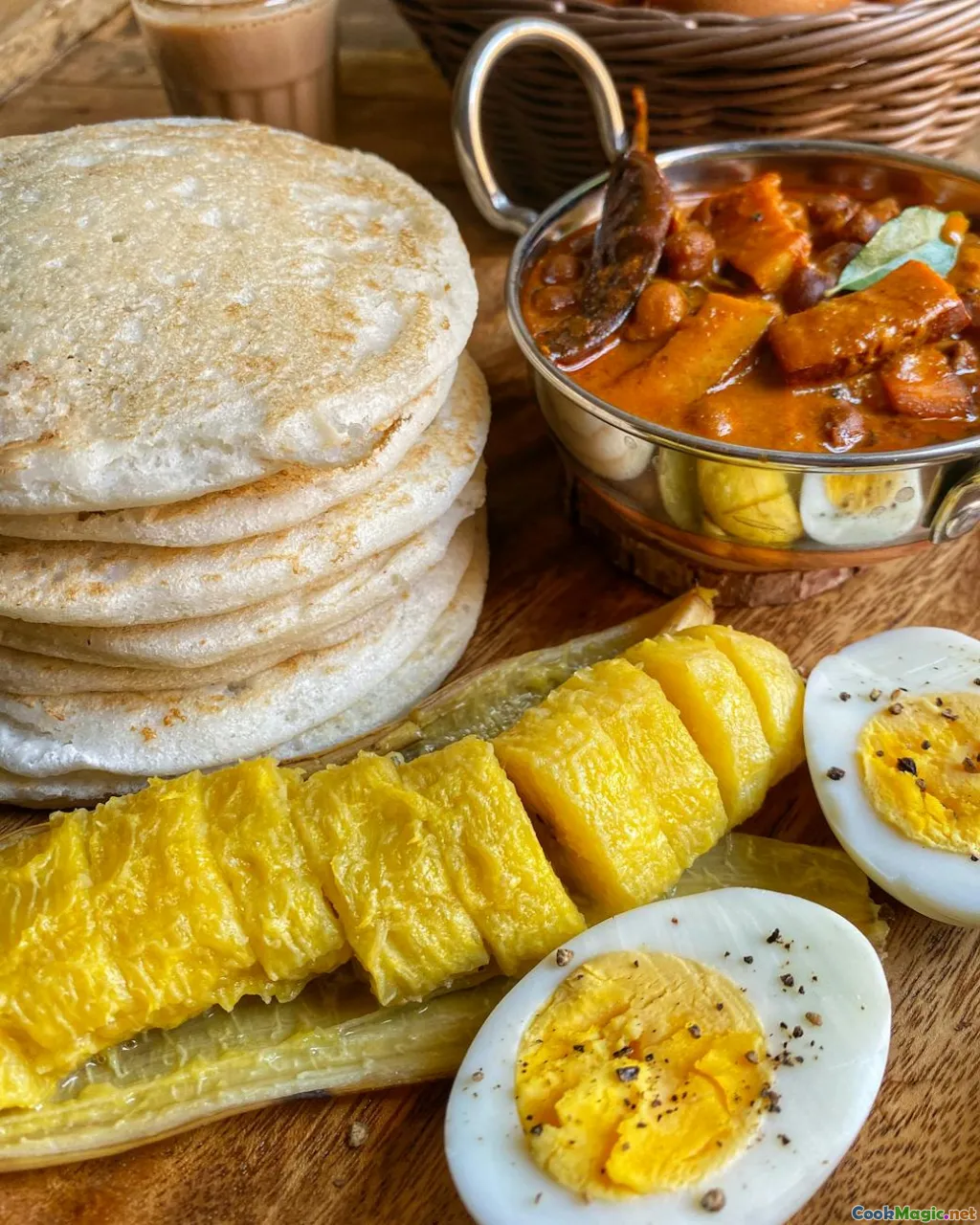
- Paper dosa: Ultra-thin, almost translucent at the edges. High rice proportion and a batter thinned just to the edge of control. Cooked entirely on one side for a golden, glassy finish.
- Mysore masala dosa: Spread thin, but with a layer of fiery, garlicky red chutney brushed directly onto the dosa before filling. The spice-laced oil aids browning; the center stays slightly tender for structural integrity around the masala.
- Davanagere benne dose: The butter showstopper. Slightly thicker spread, generous butter applied in stages, and cooked a bit longer to achieve a crackling exterior with a buttery-soft interior. Served with a small hill of white butter on top—fragrant, sinful.
- Rava dosa: A different science, made with semolina, rice flour, and wheat flour, no fermentation required. The batter must be thin and watery so it perforates on contact with the tawa. Ultra-crisp by design, with a lacy, cupped texture.
- Neer dosa: Not crisp but worth mentioning for contrast—thin, gossamer dosas from Karnataka made of just rice and water, no fermentation. Soft and pliant, a whisper instead of a crackle.
These styles share the same hearth but diverge in texture and method. Understanding each helps you modulate your own home dosa to the exact level of shatter you want.
Rava Dosa: Instant Crispness, Different Science

When you crave instant gratification, rava dosa obliges. There’s no fermenting, only patience while the batter rests for hydration.
A reliable blueprint:
- 1/2 cup fine semolina (rava)
- 1/4 cup rice flour
- 2 tablespoons all-purpose flour (optional but stabilizing)
- 1 1/2–2 cups water (start lower, thin as needed)
- 1/2 teaspoon cumin seeds, chopped green chilies, ginger, black pepper
- Salt to taste
- Optional: finely chopped onions and cilantro; a splash of buttermilk
Rest 15–20 minutes, then thin until the batter is like buttermilk—spreadable by pouring, not by ladle pressure. The tawa must be hot. Pour from a height, spiraling and filling gaps; the batter should perforate, creating a net. Drizzle oil generously and cook until it releases and crisps. Do not attempt to spread with the ladle. Flip to finish if you want deeper color. The result is a delicate lattice with savage crispness and spice pops in every bite.
Home Kitchen Constraints: Water, Climate, and Time

Crispness can feel elusive when your kitchen has quirks—a weak burner, a cold winter window, hard water. Here’s how to adapt.
- Hard water: Chlorine and high mineral content can slow fermentation. Use filtered water for soaking and grinding. A teaspoon of rice from a prior ferment (or a pinch of homemade yogurt) can inoculate the new batch.
- Cold climate: Ferment in the oven with the light on, or on top of the fridge. Don’t seal the Instant Pot when using the yogurt setting; you want warmth, not pressure.
- Weak burner: Preheat the cast iron longer on medium; once hot, it will compensate for a less powerful flame. Consider a slightly smaller tawa for more focused heat.
- Non-stick pan: If that’s all you have, lower expectations slightly on browning. Reduce oil to a bare sheen, and focus on batter quality and spread—crispness is possible, just subtler.
- Salt timing: If you’re struggling to ferment, add salt later (after partial fermentation) to avoid slowing early microbial activity. That said, typical levels of iodized salt won’t ruin fermentation; the effect is modest. The bigger factors are temperature and batter hydration.
- Storage: Fermented batter keeps 3–5 days refrigerated. Day two or three often yields superb crispness as the batter matures. Thin before use as needed; batter thickens in the cold.
Case Study: A Morning in Mylapore and the Dosa That Changed My Technique
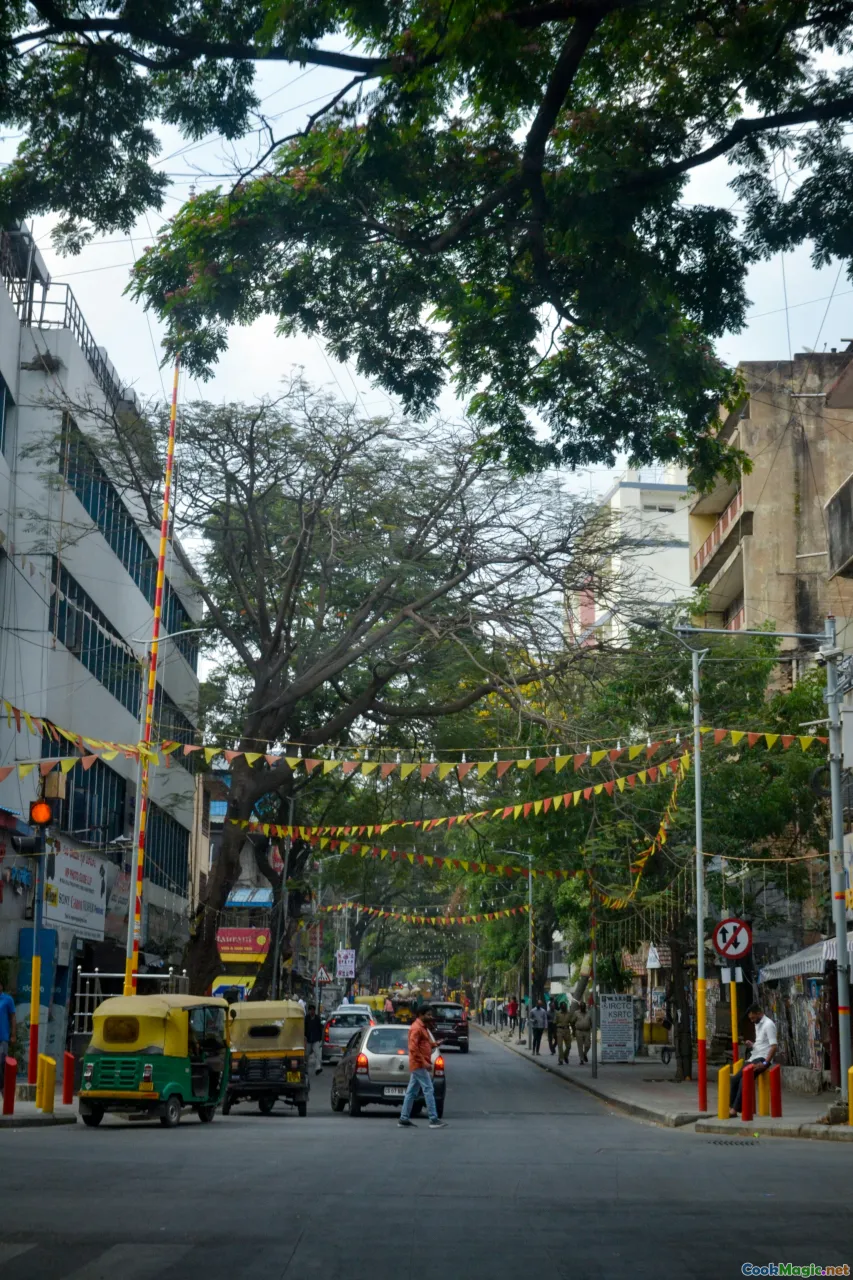
It was barely six when I walked into a mess in Mylapore, the kind of place where the walls gleam with a patina of steam, and the calendar is always stuck on a festival day. The cook wore a checked lungi, a half-smile, and the aura of someone who has, with quiet precision, fed thousands. He worked two tawas at once, each like a disciplined sun.
I watched him ladle and spiral without hesitation. He didn’t spread thinly so much as he convinced the batter to become thin, his wrist practicing a steady, meditative circle. He let the dosa talk—waiting for the pale sheen to dull, for tiny steam vents to appear. Then he moved with the decisiveness of a conductor: a drizzle of gingelly oil around the edges, a quick brush of red chutney for the Mysore-style orders, a neat scoop of masala—potatoes perfumed with mustard seeds, green chilies, and curry leaves—placed dead center. He never flipped unless a customer wanted extra roast.
When my dosa arrived, it arched like a golden sail. The first bite was a minor collapse, shards clinking softly onto the plate. It was crisp, yes, but not brittle. There was a suppleness near the core that made folding easy and carried the masala without breaking. The cook noticed me analyzing the crumb like a baker and laughed.
“Rice is patient, but the pan is impatient,” he said. “You have to be friend to both.” He explained he’d added a handful of poha to yesterday’s soak because the weather had swung humid and the morning’s crowd demanded speed. The poha would thin the batter just enough for swift, wide spirals. He’d also rubbed the tawa with a cut onion after the first dosa, to tame the heat and keep the surface clean between orders. “First dosa is for Ganesha,” he grinned, placing an imperfect one aside. “He protects the rest.”
That morning altered my habits: I began adjusting batter texture by weather, not recipe. I learned to pause and listen for the batter’s sigh. And perhaps most importantly, I stopped chasing perfection in the first dosa.
Common Mistakes and Fixes
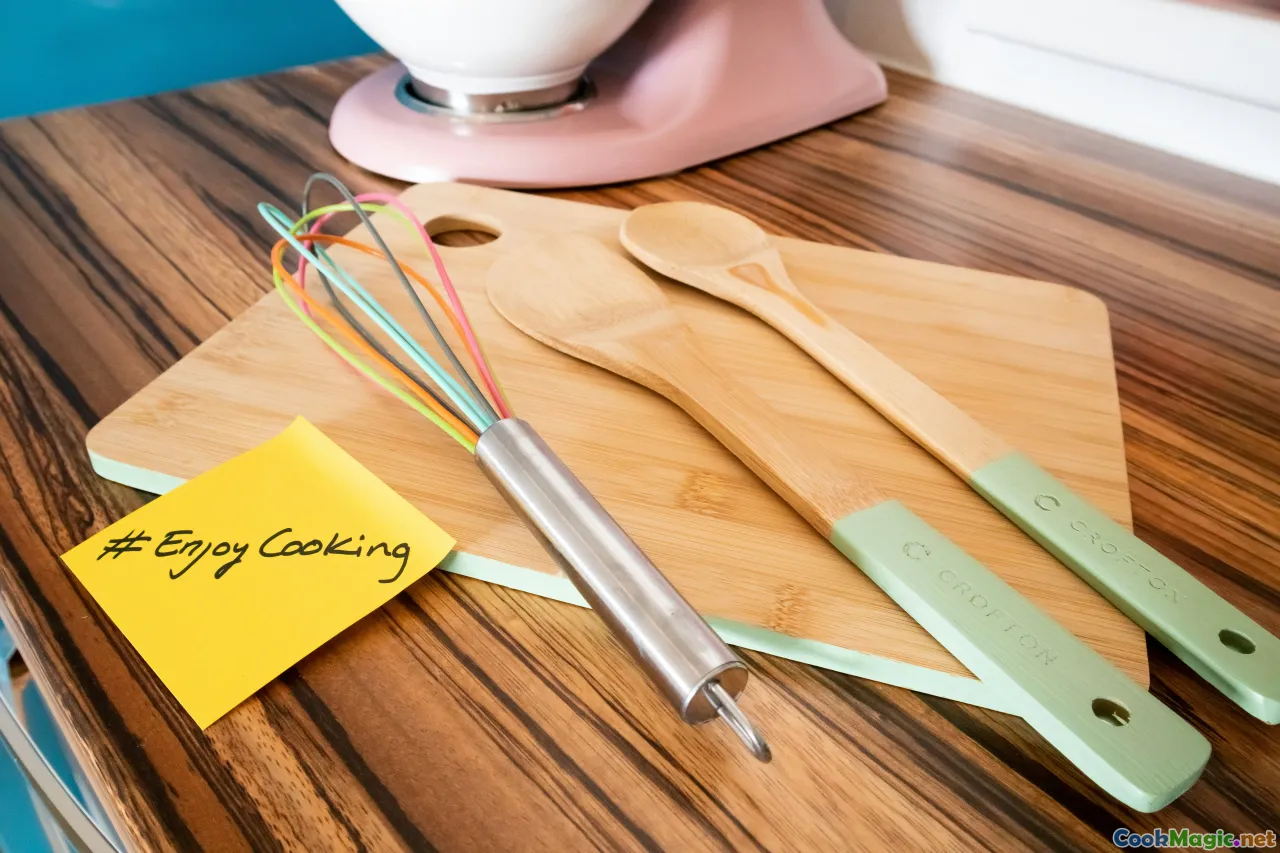
- Dosa won’t spread: Batter too thick or tawa too hot. Thin with water a tablespoon at a time. Cool the tawa briefly by sprinkling water, wiping quickly, then re-oiling lightly.
- Sticks to the tawa: Tawa under-seasoned or not hot enough. Prime with an onion-oil rub, heat thoroughly, then try again. New cast iron needs a few sessions to become truly nonstick.
- Pale, no browning: Under-fermented batter or too little heat. Let the batter rest longer (even in the fridge overnight) and turn up heat once the spread is complete.
- Brittle and sour: Over-fermented batter. Refresh by mixing in a portion of freshly ground rice paste, or temper with a small addition of rice flour and water. Use immediately.
- Thick, bready center: Too much pressure on the ladle in the early spiral or batter too thick. Lighten your touch; allow the center to remain a hair thicker only if you want a benne style.
- Oily but not crisp: Tawa too cool. Increase heat gradually; oil should sizzle gently as it hits the edge.
Serving for Snap: Chutneys and Sambar That Amplify Crunch
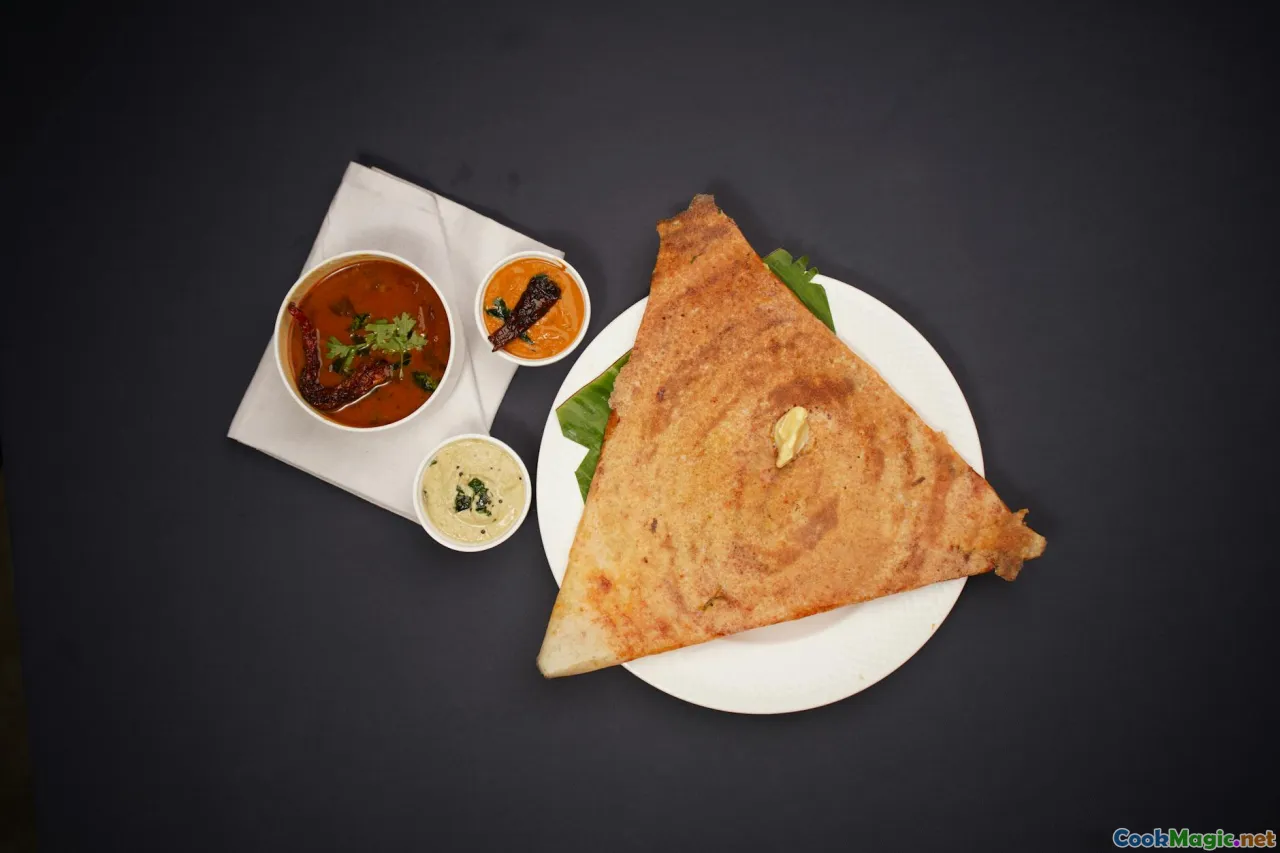
Crispness isn’t just about sound; it’s about contrast. The accompaniments you choose can either drown your dosa or let it sing.
- White coconut chutney: Freshly ground coconut, roasted gram (pottukadalai), green chilies, and ginger, tempered with mustard seeds and curry leaves. The cool creaminess is a perfect foil; dip, don’t drench.
- Red chutney: A Mysore favorite—dried red chilies, garlic, roasted chana dal, a dash of tamarind. It paints spice onto the dosa without softening it if brushed thin.
- Tomato-onion chutney: Slightly tart and smoky when tempered well. Keep it thick to avoid sogging the dosa.
- Tiffin sambar: A lighter, slightly sweeter sambar common in Tamil Nadu breakfast counters. Ladle it into a bowl and sip between bites to preserve your dosa’s crisp edges.
- Milagai podi (gunpowder): A dry spice mix of dal, sesame, and chilies. Mix with ghee and brush just before folding; it keeps the interior glossy but doesn’t compromise the crackle.
The plating matters: Serve dosas immediately. A dosa’s nemesis is time; even a minute under steam is a minute toward limpness. If you’re making multiples at home, fold them quickly and lean them against each other instead of stacking flat.
Recipes and Ratios: A Practical Blueprint

Classic crisp dosa batter (makes 10–12 dosas):
- 1.5 cups parboiled idli rice
- 1.5 cups raw rice (Sona Masoori or similar)
- 1 cup whole skinned urad dal
- 2 tablespoons poha (thin)
- 1–2 teaspoons fenugreek seeds
- 1–2 tablespoons chana dal (optional)
- Salt to taste
- Water as needed
Steps:
- Rinse and soak: Rinse rices together until water runs nearly clear. Soak with chana dal if using. Rinse urad dal and soak separately with fenugreek. Soak poha for 20 minutes right before grinding.
- Grind urad: Drain and grind to a light, fluffy paste with cold water as needed.
- Grind rice: Drain rice (and poha), grind to a slightly gritty paste with minimal water.
- Combine: Fold rice into urad, mixing by hand for 2–3 minutes to aerate. Adjust consistency to a pourable thickness.
- Ferment: Cover loosely and rest until voluminous and bubbly—8–12 hours warm weather, longer if cool.
- Salt and adjust: Stir in salt if you haven’t already. If batter is too thick for an easy spiral, loosen with a splash of water.
- Preheat and prime: Heat a cast iron tawa, do the onion-oil rub, and test with a few water droplets.
- Spread and cook: Ladle batter, spiral thin, drizzle oil, and cook until edges brown and release. Fold without flipping for a classic crisp; flip briefly for deeper roast.
Mysore masala finish:
- Spread dosa thin. Brush a very thin layer of red chutney over the surface as soon as the shine dulls.
- Place a scoop of potato masala (boiled potatoes mashed with onions, chilies, mustard seeds, urad dal, chana dal, turmeric, curry leaves, a squeeze of lemon) at the center.
- Drizzle a few drops of ghee, fold, and serve immediately.
Davanagere-style benne approach:
- Spread slightly thicker than a paper dosa.
- Dot with unsalted white butter in three stages: just after spreading, when the surface sets, and just before folding.
- Cook a touch longer on medium heat to develop a deep, butter-bronzed crust. Serve with an extra knob of butter.
For the Curious: The Science of Crispness
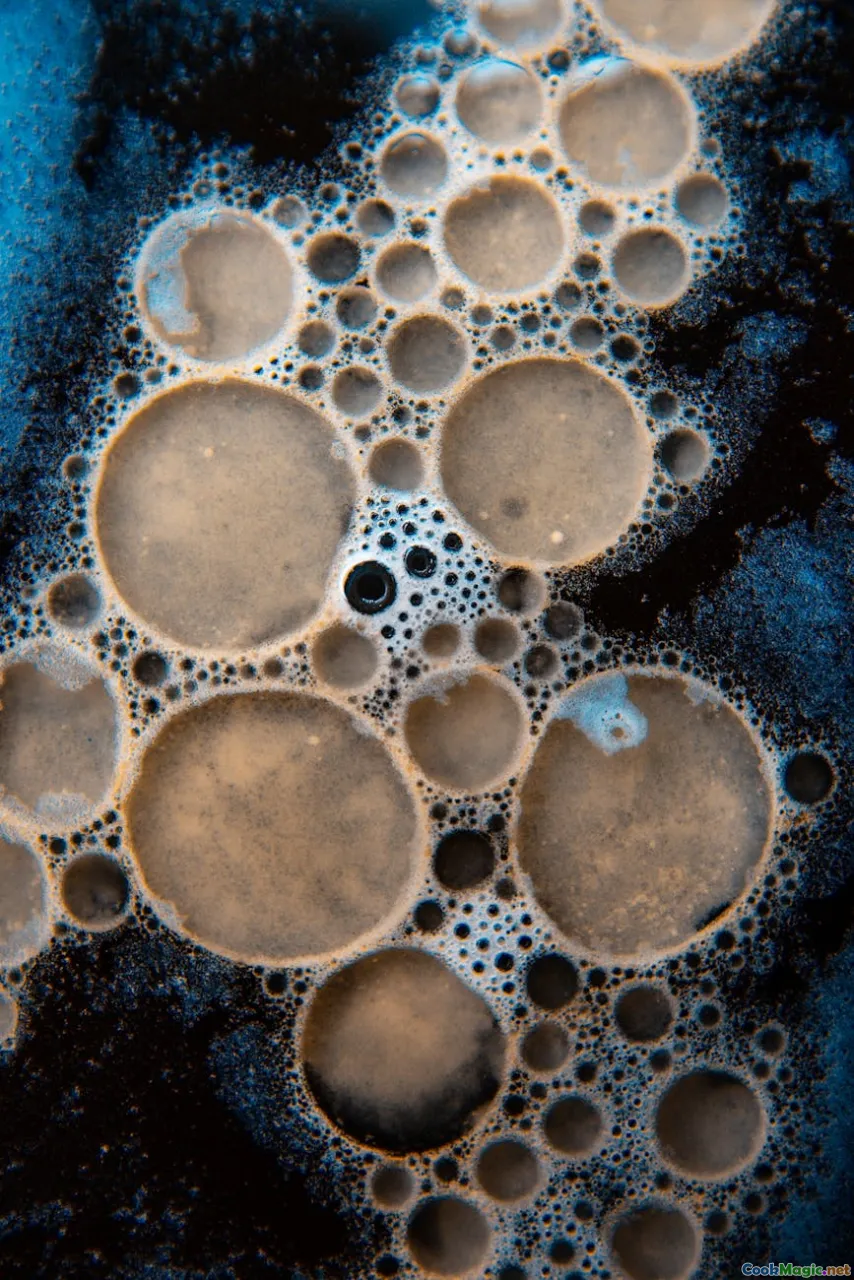
Crispness is chemistry choreographed by technique.
- Starch gelatinization: As batter hits the hot tawa, rice starch absorbs water and swells. This sets the film. Parboiled rice has pre-gelatinized starches that set reliably, which is why it’s prized for structure.
- Protein matrix: Urad dal’s proteins and mucilage create a flexible scaffolding that traps gas. When heated, proteins coagulate, lending strength to the thin web.
- Fermentation: Lactic acid bacteria and wild yeasts feed on sugars, producing acid and gas. The acid lightly pre-digests starches and proteins, improving browning and digestibility. The gas inflates the batter, producing micro-bubbles that evaporate into holes—your lace.
- Water management: A thin batter spreads widely. As it cooks, rapid evaporation dries the film into crispness. Too much moisture, and it steams; too little, and it seizes before spreading.
- Fats and Maillard: Ghee, butter, and gingelly oil promote even browning and the Maillard reaction—those toasty flavors that smell like warm popcorn and roasted nuts. Chana dal adds amino acids that encourage browning.
- Heat gradient: Cast iron creates a steady gradient. You want the center just hot enough to set quickly, with edges that see slightly higher heat, encouraging that golden ring of crispness.
Understanding this dance turns guesswork into insight. You know why a humid day wants a touch more heat; why batter that’s too sour browns quickly but can taste acrid; why the onion rub works (it’s a mild deglazer and heat moderator, not magic).
A Personal Pantry for Dosa Days

Over years of dosa weekends, I’ve learned to keep a dosa shelf:
- Idli rice and Sona Masoori in airtight bins
- Whole gota urad dal, fresh (old urad behaves sluggishly—buy in smaller quantities)
- A jar of fenugreek seeds
- Thin poha for last-minute lightness
- Good gingelly oil, fresh ghee
- A box of roasted chana dal (pottukadalai) for quick chutneys
- Dried red chilies and mustard seeds for tempering
A small scrap of ritual helps too: I soak the rice while making filter coffee, listening to the burble and inhaling the nut-chocolate perfume that somehow always tastes better when the kitchen smells of dosa. If there’s one secret, it’s this: make dosa when you have time. Rushing leads to compromise. Crispness favors patience.
Beyond Breakfast: Dosa as a Canvas
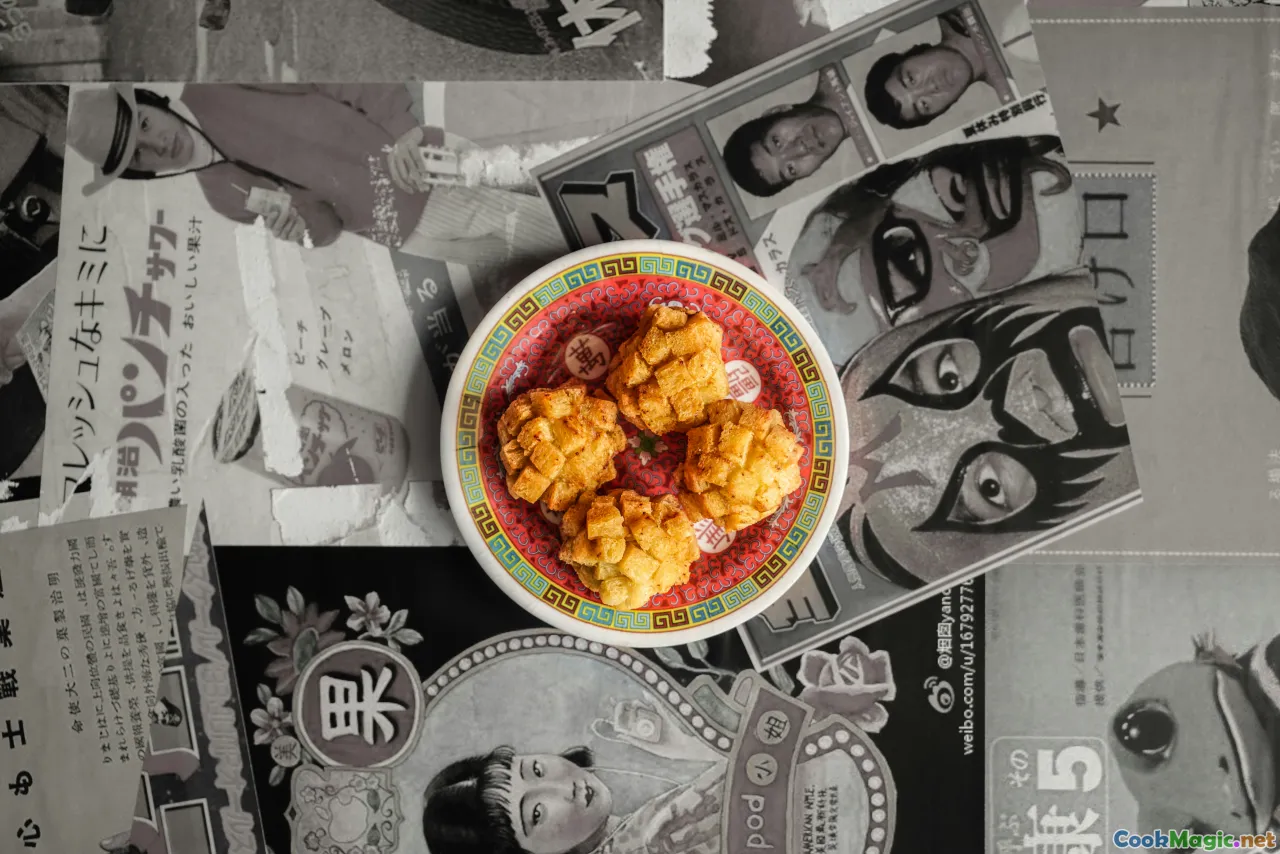
Crisp dosas beg for company. Try a Guntur karam dosa—spread with a chili-garlic paste that hits the nose before it hits the tongue. Or a podi dosa brushed with ghee until the spice granules turn aromatic and cling like glitter. In Bengaluru, street carts sometimes scatter grated carrot and onions over the dosa mid-cook; the vegetables sweeten, but you retain a crisp face beneath. A cheese dosa—controversial to purists—melts into a salty, stretchy layer that complements a deep roast. For a more delicate drama, spoon lemony podi-flecked upma into the center of a thin dosa and fold; the gritty-smooth upma against the brittle dosa is textural theater.
Whatever you choose, remember that crispness is fragile. Add fillings after the dosa sets, and use restraint. You want harmony, not damp.
The Last Mile: Serving and Eating Like You Mean It

Warm plates help. A cold plate drinks steam and returns it as condensation, softening your masterpiece. If you’re cooking for a crowd, designate a server who runs dosas to the table the second they fold, like a relay baton. Eat with your hands; feel the texture give way, hear the softness of breakage. Tear from the edge toward the center, and chase each bite with a dab of chutney and a sip of sambar. This is not just breakfast; it’s a ritual of pace and attention.
One of my favorite memories is of a small family in Basavanagudi, three generations around a table, the smallest child tracing the edge of her dosa before committing to the first tear. Her grandmother watched, smiling, then tapped the dosa gently with a finger. It sang back, a papery trill. “Now,” she said, “it’s ready.”
Crispy dosas are a test of patience, a celebration of balance, and a gift to the senses. They smell like warmth, sound like celebration, and taste like home. The secrets aren’t hidden; they’re scattered along the path—grain, water, time, heat, and a little faith. Once you learn to hear the batter, to read the tawa, and to trust the quiet drama of fermentation, the crackle becomes inevitable. And when it does, you’ll understand why a perfect dosa can anchor a morning, a city, a memory.









